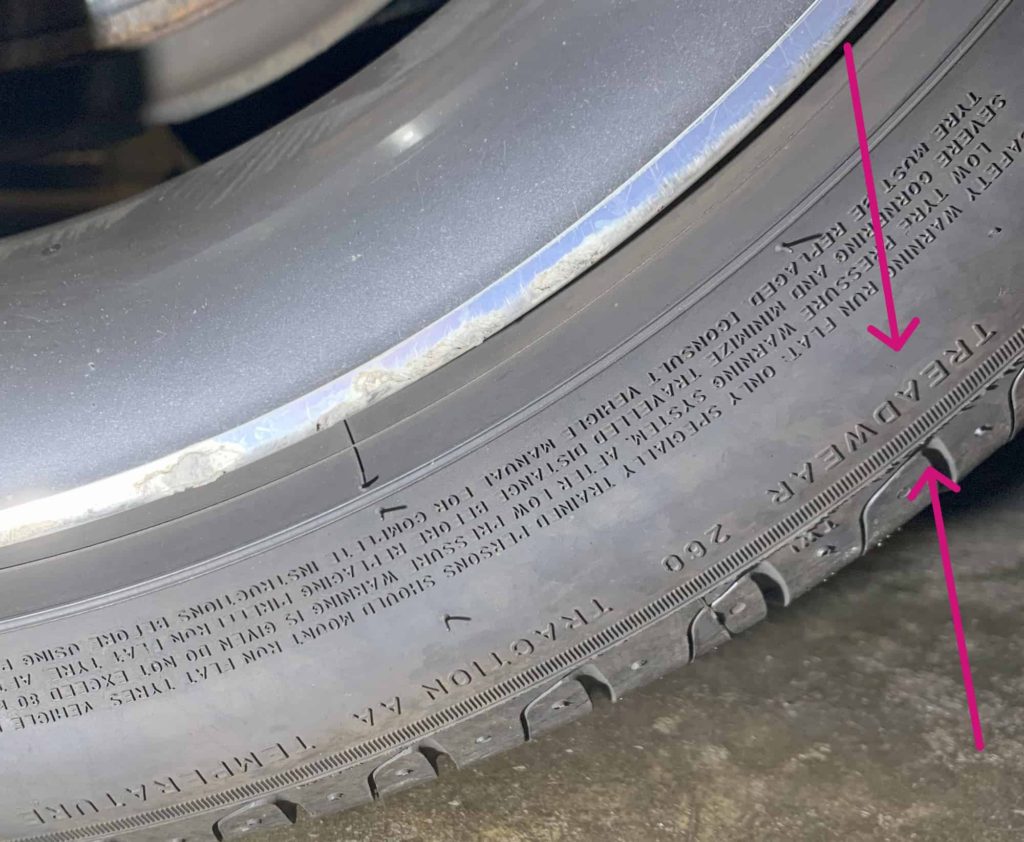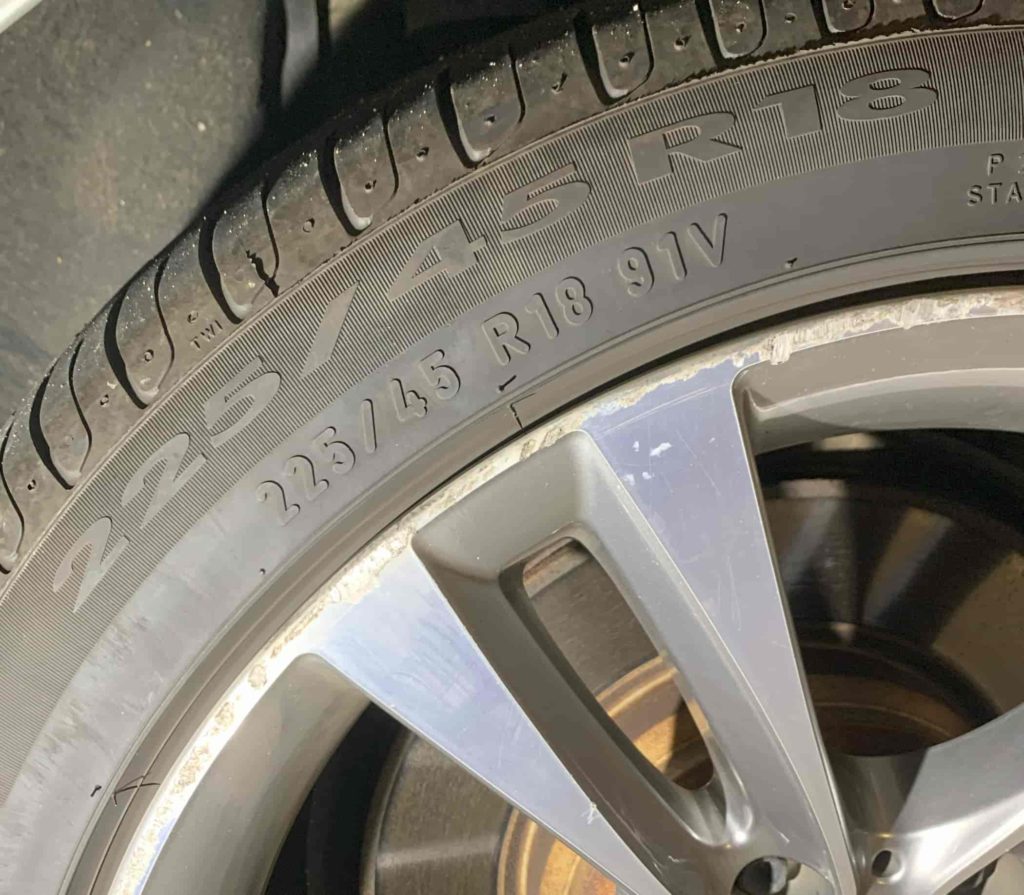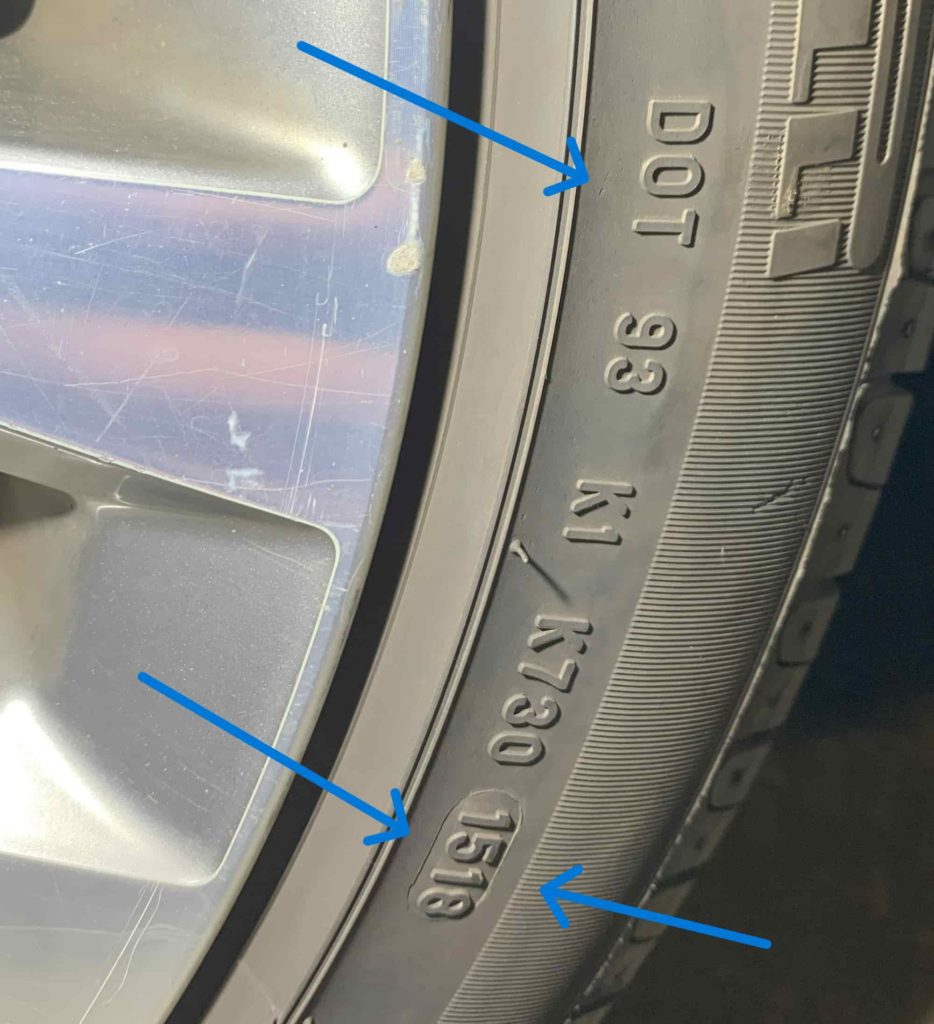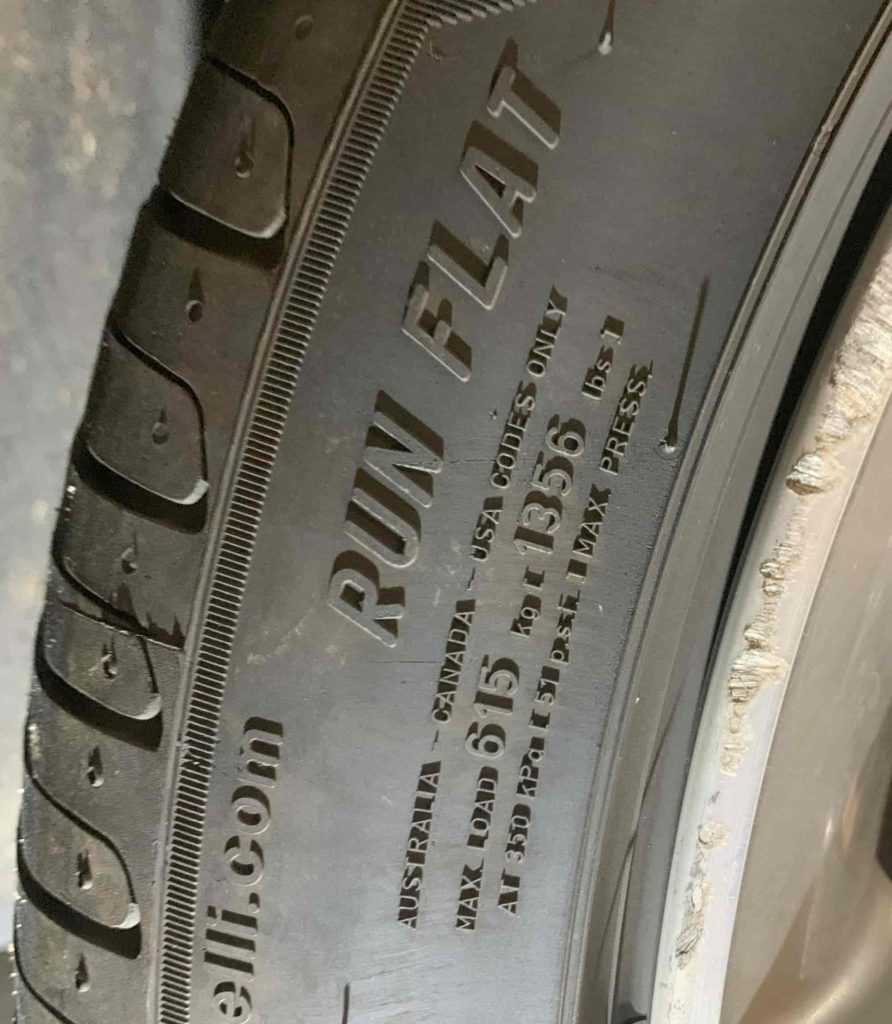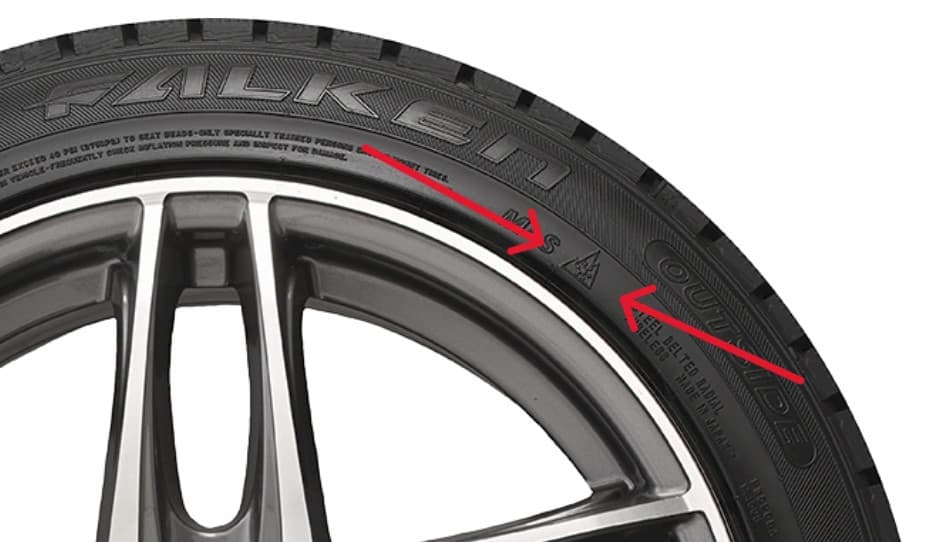Tire Sidewall Markings
Tire sidewall markings may seem like a complex jumble of letters, numbers, and symbols to an untrained eye. However, understanding these markings is of paramount importance for every vehicle owner.
The tire sidewall is essentially a treasure trove of vital information that can provide insights into the tire’s size, load capacity, speed capability, manufacturing details, and other crucial aspects. By deciphering these markings, drivers can ensure their safety on the road and make informed decisions when purchasing or replacing tires.
Why You Need to Understand Tire Sidewall Markings
The importance of being able to read and comprehend tire sidewall markings cannot be overstated. Tires are the only point of contact between a vehicle and the road surface, making them critical for maintaining control and ensuring safety. Knowledge of sidewall markings allows drivers to select tires that align with their specific driving needs and preferences.
It empowers them to choose appropriate replacements when necessary and provides insights into tire maintenance requirements. Additionally, understanding these markings assists in avoiding potential legal issues related to incorrect tire specifications or non-compliance with regulations.
Tire Sidewall Basics
Tire sidewall markings are like a secret language, providing crucial information about the tire’s specifications and capabilities. Understanding these markings is essential for ensuring proper tire selection and maintenance. To decipher the codes on a tire sidewall you must have an understanding of the different numbers and letters that are typically present.
Identification of Brand, Model, and Size Information
The branding information on a tire sidewall reveals crucial details such as the manufacturer’s name or logo along with specific model identifiers. This information helps consumers identify tires from trusted brands known for their quality and reliability. Identifying size information is also vital for ensuring compatibility with your vehicle.
The size is typically displayed in a standardized format such as “P225/45R18,” where each component represents different measurements like width (“225“), aspect ratio (“45“), and rim diameter (“1“). Understanding these size specifications ensures selecting tires that fit your vehicle perfectly.
Tire Load Index
Apart from brand identification and size details, load index (LI) rating and speed rating symbols provide essential performance-related information about tires. The load index code indicates the tire’s maximum carrying capacity, and it is represented by a numerical value. Passenger cars and light trucks usually have a laid index anywhere from 70 to 126. For instance, an LI code of “94” signifies a maximum load capacity of 1,477 pounds per tire.
Below is a condensed chart showing selected load indexes ranging from 70 to 126. It includes only representative values to give you a general idea without making the chart too large.
Tire Load Index Chart
Load Index | Weight (kg) | Weight (lbs) |
70 | 335 | 739 |
75 | 387 | 853 |
80 | 450 | 992 |
85 | 515 | 1135 |
90 | 600 | 1323 |
95 | 690 | 1521 |
100 | 800 | 1764 |
105 | 925 | 2039 |
110 | 1060 | 2337 |
115 | 1215 | 2679 |
120 | 1400 | 3086 |
125 | 1650 | 3638 |
126 | 1700 | 3748 |
How is Load Index Determined?
The standard reference tire used for establishing these ratings has a load carrying capacity of 1,764 pounds when inflated to its maximum pressure. Tire manufacturers then use this reference to assign specific load index values based on their own calculations.
Tire Speed Rating
Speed rating codes reflect the tire’s maximum safe speed capabilities under specified conditions. These codes typically consist of letters and range from “N” (87 mph) to “Y” (186 mph). Matching the load index and speed ratings with your vehicle’s requirements ensures optimal performance and safety.
Speed Rating | Maximum Speed (km/h) | Maximum Speed (mph) |
L | 120 | 75 |
M | 130 | 81 |
N | 140 | 87 |
P | 150 | 94 |
Q | 160 | 100 |
R | 170 | 106 |
S | 180 | 112 |
T | 190 | 118 |
U | 200 | 124 |
H | 210 | 130 |
V | 240 | 149 |
W | 270 | 168 |
Y | 300 | 186 |
Z | Over 240 | Over 149 |
Note that the ‘Z’ rating represents a category that is for speeds greater than 240 km/h or 149 mph. Many high-performance tires are in the ‘Z’ category and will also include one of the W or Y ratings, signifying the exact top speed for which they’ve been tested.
Detailed Breakdown of Tire Sizes
Tire size designations may seem like a jumble of letters, numbers, and symbols at first glance. However, they hold valuable information about a tire’s dimensions and characteristics. To make sense of these designations, let’s break down the most common format: P225/45R18.
Tire Size Format
In this example, the first letter “P” indicates that the tire is designed for passenger vehicles. Different letters can represent various vehicle types, such as “LT” for light trucks or “ST” for special trailer applications. The next three digits “225” refer to the tire’s width in millimeters from sidewall to sidewall when properly inflated and mounted on an approved wheel.
Meaning Behind Each Component
Following the width measurement, a forward slash (“/”) separates it from the aspect ratio. In our example, “45” represents the aspect ratio – a percentage indicating the tire’s height compared to its width. Higher values indicate taller sidewalls which provide more cushioning and potentially affect handling characteristics.
The next component is denoted by the letter “R,” which stands for radial construction – the most common type of tire today. Radial tires have layers (plies) running radially across their tread rather than diagonally as in bias-ply tires.
The final number in our example, “18,” denotes the rim diameter in inches that corresponds to this specific tire size. It determines whether a particular wheel will accommodate this tire properly. So, next time someone asks you what size rims you have, check the number after the R and you have your answer!
Aspect Ratio and Rim Diameter
The aspect ratio plays a critical role in how a tire performs on different road conditions. A lower aspect ratio (e.g., 50) usually means a tire has a wider tread and provides better cornering stability but it may compromise ride comfort due to reduced sidewall height.
Conversely, higher aspect ratios (e.g., 70) offer increased cushioning and smoothness but may not provide the same level of handling precision. Rim diameter is another vital consideration when choosing tires.
It must match the size of the wheel it is mounted on; otherwise, safety and performance can be compromised. For example, if you try to mount 18” tires on 17” wheels they will not fit correctly and cause serious issues if you try to drive on them.
In addition to these key components, tire size designations can include other measurements such as load capacity codes (e.g., 91 or 615 kg), maximum inflation pressure (e.g., 44 PSI), and other manufacturer-specific indicators. Familiarizing yourself with these details will enable you to make informed decisions when purchasing new tires that suit your vehicle’s requirements and your personal driving preferences.
Manufacturing Dates
DOT Number
When it comes to understanding tire sidewall markings, the Department of Transportation (DOT) number plays a crucial role in revealing vital information about a tire’s age. The DOT number is a unique alphanumeric code issued by the U.S. Department of Transportation which is molded onto every tire produced for use on public roads. This code provides valuable insights into the manufacturing date and other relevant details.
By deciphering this code you can ascertain whether their tires are still safe and reliable to use as well as how long ago they were produced. The significance of the DOT number lies in its ability to disclose important information regarding a tire’s age and ultimately its condition.
As tires age the rubber compounds deteriorate which will affect their performance characteristics such as grip, traction, and overall structural integrity. Understanding how to decode the DOT number empowers consumers with knowledge that enables them to make informed decisions about when to replace their tires as well as prevent them from buying old tires.
Determining the Week and Year of Tire Production
Within the DOT number there is a four-digit numerical code that reveals valuable information about when a tire was manufactured. The first two digits represent the week of production while the last two digits indicate the year.
For instance, if you come across “1518” as part of your sidewall markings, it means that the tire was manufactured during the 15th week of 2018. This interpretation is essential because it allows individuals to determine not only how old their tires are but also whether they fall within acceptable safety standards based on industry recommendations.
While there is no set expiration date for tires, experts generally advise replacing them after six years from their manufacturing date or earlier if signs of wear or damage become apparent. By understanding the four-digit code on your tire sidewall you can make an informed decision by using the age of the tire as a factor.
Remember, while tires may seem durable and reliable they are subject to aging and wear like any other component of your vehicle.
Treadwear Ratings
To further complicate matters, manufacturers attach a three-digit number called “treadwear grade” to their tires as part of compliance with federal regulations. This grade represents an estimate of how long it takes for the tire tread to wear down compared to a baseline standard tire.
For instance, if a tire has a treadwear grade of 200, it means that it will wear out twice as fast as the baseline standard tire. On the other hand, if another tire receives a grade of 400, it indicates that it will wear out at half that rate.
Therefore, higher numbers suggest better durability. It’s worth noting that these grades are comparative rather than absolute measures: they offer relative evaluations within each manufacturer’s line-up but cannot be directly compared across different brands or models.
Consumers should use these ratings as indicators when comparing tires from the same manufacturer. By understanding the purpose and interpretation of treadwear ratings and grades, consumers can make informed decisions about tire selection, ensuring that they choose a product that aligns with their specific needs in terms of longevity and wear resistance. To learn more about tire tread wear read this.
Specialzied Sidewall Markings
Tire sidewalls often bear specialized markings that provide valuable information about specific features or technologies. One such marking is the indicator for run-flat technology, denoted by the letters “RF” or “SSR” (Self-Supporting Runflat). This marking signifies that the tire has been designed to support the vehicle’s weight even when deflated, allowing the driver to continue driving for a limited distance at a reduced speed.
Run-flat tires are equipped with reinforced sidewalls and are particularly useful in situations where changing a flat tire immediately is impractical or unsafe. These specialized markings act as a reassuring reminder that one can rely on their tires even in challenging circumstances.
Other Sidewall Symbols
Apart from run-flat technology indicators, tire sidewalls may contain various symbols that convey critical information related to safety and performance. For instance, an emblem depicting a snowflake within a mountain peak suggests that the tire meets specific requirements for winter traction performance. This symbol assures drivers of enhanced grip and control on snowy or icy roads, making it suitable for regions with harsh winter conditions. Additionally, other symbols like those denoting all-season capabilities or off-road suitability serve as visual cues for consumers seeking tires tailored to their driving needs and environmental demands.
Please note that this blog post contains Amazon affiliate links. This means that if you make a purchase through one of these links, we at TPMSRESET.COM may earn a small commission at no extra cost to you. We only recommend products that we personally use and believe in. Thank you for supporting us.
